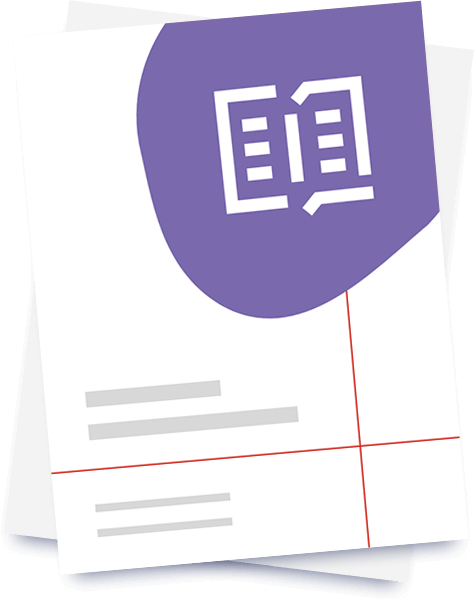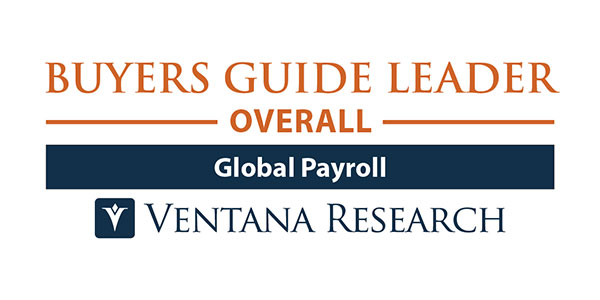Executives have known for decades that to differentiate and defend their companies competitively, they need to focus on their core business strengths — the central activity that yields most profits and will assure organisational resilience for the future.
This is especially true as your company gets ready to take the leap into overseas markets. Typically, at this juncture stress levels are high, and overstretched staff need all the time they can get to dedicate to business-mission-critical initiatives.
To be able to concentrate on core business competencies, companies know they need to partner with reliable third parties. The global business process outsourcing market is projected to expand at a compound annual growth rate (CAGR) of 9.1% from 2022 to 2030,2as firms seek to minimise operational vulnerabilities, improve agility and reduce operating costs that invite investor scrutiny.
Payroll is a prime back-office candidate for outsourcing, since:
- With the right technology and service approach, efficiencies can quickly be achieved
- Much of its repetitive, administrative tasks and calculations can easily be automated
- Improved accuracy can reduce costly regulatory penalties
As your company expands into new overseas territories, what do you need from a payroll partner? To answer that we should first examine what your company expects from the payroll function itself.

What do your executives expect from payroll?
Optimisation as standard
The C-suite expects the payroll function to be ready to support business growth at a moment’s notice. In reality, finance and HR leaders have lower expectations — nearly a third (30%) are not confident that their payroll system can support their company’s plans for growth or geographical expansion.²
Data fit for strategic input
Senior management will be frustrated by anything less than a single ‘source of truth’ for payroll data, which can and should serve as a key component informing commercial and growth strategies.
Yet in an ADP survey, 47% of payroll managers said they couldn’t provide answers to most of the questions that leaders asked to support strategic decision-making.²
Much of this comes down to the lack of that single source of truth — 74% of respondents were still running multiple payroll solutions across different countries,² hindering their ability to provide high-quality, consolidated management reports.
Flexibility built in
Any company’s payroll function should be able to scale and accommodate varying sizes of employee populations incountry as the operating environment morphs around it.
Again, experience on the ground is at odds with this expectation. Sixty-one percent of senior payroll managers we surveyed found they couldn’t adapt their payroll to meet many of their company’s needs during the pandemic, while 33% said they didn’t have a payroll system to support expansion plans.² Contrast this with the companies using a unified global payroll platform — they reported that they did have the agility to analyse data quickly and scale to support company growth.
Compliance, covered
At a minimum, company leaders expect the payroll function to convert compensation from gross to net pay while avoiding regulatory penalties along the way. Yet complying with constantly changing rules across different countries takes a tribe of legal experts to track updates and interpret often ambiguously worded laws.
In striving to comply with employment regulations, tax legislation, benefits entitlements, health and safety mandates, reporting requirements, and data privacy and security laws, companies often prefer to enlist the help of a global payroll provider.
Yet 24% of finance and HR leaders said they don’t get the support from their payroll vendor that they need to stay compliant.² This is a vital point to resolve before you take on the extra complexity of compliance in a new overseas territory.
What do employees expect from their company’s payroll function?
In a nutshell? Never to have to give it a second’s thought.
It’s a fundamental tenet of the employee-employer relationship that companies pay their staff what they’ve earned on time and correctly.

Yet all the signs are that firms are increasingly failing in their contractual commitment. According to ADP research, payslip problems continue to plague both workers and employers across the globe.³
This is a precarious situation, especially at a time when workers worldwide are weighing up all their options. As the Harvard Business Review puts it: “The often shattering and all-enveloping experience of Covid-19 has stimulated a fundamental rethinking about what people want and need from work — or whether they want to do it at all. The YOLO (You Only Live Once) movement, the Reddit anti-work movement, and China’s tangping or “lying flat” anti-work movement, for example, show that there’s a multidimensional global impulse pushing people away from traditional jobs.”⁵
We know from our own research that a significant proportion (30%) of employees around the world are actively trying to change jobs or have already done so.³ COVID was certainly a catalyst, but underlying issues with employee experience — payroll included — are a contributory factor. Workers expect employers to have modernised payroll operations in response to failings that were highlighted during the pandemic; to have progressed beyond stress-test theory to implementing improvements based on recent experience.
There are so many competing attractions and compelling options tempting workers away from traditional roles that you can’t afford payroll errors or inconveniences.
A fair workplace
Being sure that companies pay staff equitably for the work they do is becoming a dealbreaker for many employees. Three quarters (76%) say that they would consider looking for a new job if they discovered their employer had an unfair gender pay gap or no diversity and inclusion policy.³
As you get ready to recruit a workforce in your new market(s), do you have the up-to-date payroll information that will help you demonstrate fair pay practices (or take action to remedy disparities)?
Talking of fair compensation, ADP Research Institute’s (ADPRI) People at Work survey finds that 61% of workers expect a pay rise in the next year, with 76% prepared to ask for one if they feel they deserve it.³ (Women, however, are less likely to ask for a salary increase or promotion.⁴) It’s only when armed with reliable global payroll data that you’ll be in a credible position to advise executives on pay equity initiatives, to establish a level playing field in your new market from the outset.
What does your HR/payroll team expect?
When we surveyed HR, finance and payroll leaders, respondents felt there’s a clear view of the benefits that any payroll transformation could help them deliver. The varying responses reveal the progress still to be made before payroll professionals can truly meet business requirements.
A future-proofed solution that can take the new normal in its stride
HR teams want a payroll system that talks to popular third-party HCM software, in ways they don’t need to worry about. A synced-up ecosystem that welcomes evolving ways of working (remote, flexible, hybrid) and types of employees (permanent, contingent, consultant).
More visible data = more viable improvements
Payroll staff with data expertise are in great demand — and thin on the ground. You need easy ways to extract reliable employee data quickly and work it into reports that leaders can use to validate workforce theories and substantiate business cases for change.
What would you most like to gain from payroll transformation? (average of first, second and third ranked responses)
26% Integration of payroll data with other business/HR systems
24% Simplified payroll data collection methods
24% Streamlined payroll processes
23% Increased reporting speed
22% Tighter data security protocols
22% Improved employee experience
21% More reliable technology
21% Standardised multicountry payroll processes
20% Timely regulatory compliance insights and system updates
29% Consolidated multicountry payroll reporting
19% Remote access to payroll information
18% Industry-leading payroll support
Source: ADP, The potential of payroll: Global payroll survey 2021
Employee data safeguarded
Payroll teams appreciate more than anyone the sensitivity of the information they’re dealing with daily. Employee data is at even greater risk these days as more people work remotely — 47% of individuals fall for phishing scams while working from home, while the average cost of a data breach resulting from remote working can be as much as USD137,000.⁶
Little wonder, then, that 27% of payroll leaders want tighter data security protocols to ensure compliance in future.²
Relief from back-office inefficiencies
Payroll staff want their companies to take action to relieve the manual burden and inefficient ways of working. At ADP we’ve seen a jump in queries from potential clients eager to find out about the benefits of automation as they strive for greater capacity for the more strategic thinking required post pandemic. Currently only 2% of payroll leaders report that more than 50% of their global payroll processes are handled through Robotic Process Automation (RPA),⁷ so the potential is vast.
Defining a global payroll partnership for growth
Circling back to our earlier question: as your company expands into overseas territories, what do you need from a payroll partner? A commitment to meeting all of these expectations and helping you operationalise payroll swiftly in your new international locations. But how does your chosen expansion strategy — organic or inorganic — affect the payroll function, and by extension, your partnership with a payroll provider?
Download our guide: The vital role of payroll in international business expansion
1.Grand View Research, Business Process Outsourcing Market Size, Share & Trends Analysis Report By Service Type (Customer Services, Finance & Accounting),By End-Use (IT & Telecommunication, BFSI), By Region, And Segment Forecasts, 2022 - 20302. ADP, The potential of payroll: Global payroll survey 2021
3. ADP Research Institute, People at Work 2022: A Global Workforce View
4. PwC, Global Workforce Hopes and Fears Survey 2022
5. Harvard Business Review, Workers Don’t Feel Like a 9-to-5 Job Is a Safe Bet Anymore, 2022
6. Deloitte, Impact of COVID on cybersecurity
7. ADP, The potential of payroll: Global payroll survey 2022


